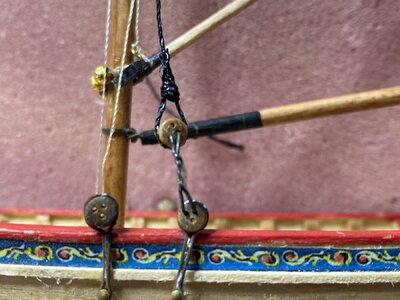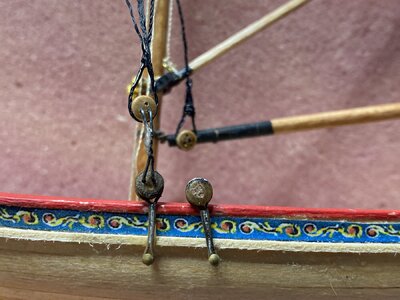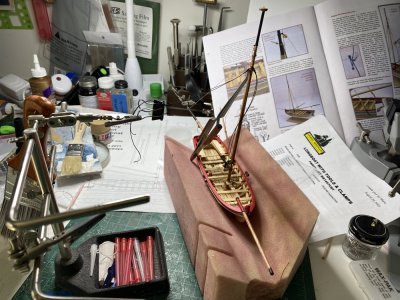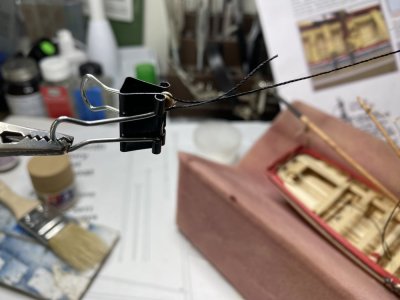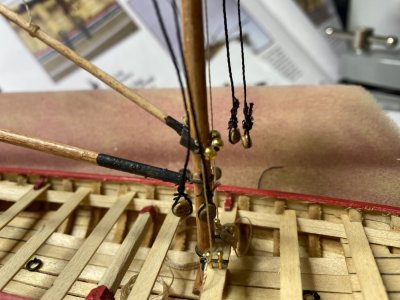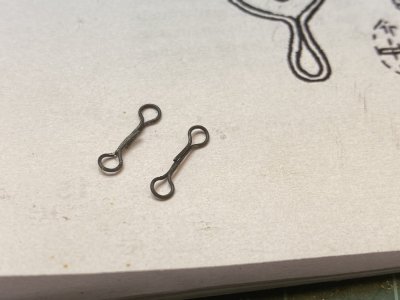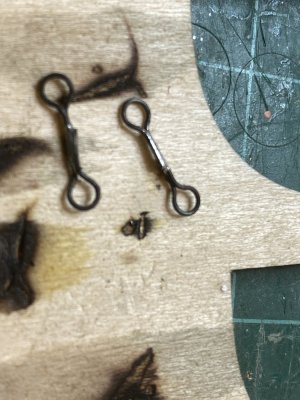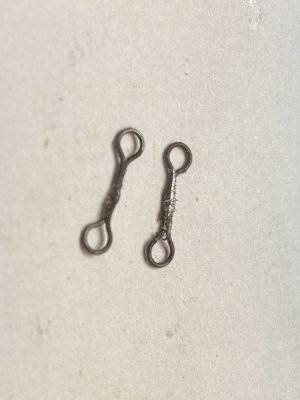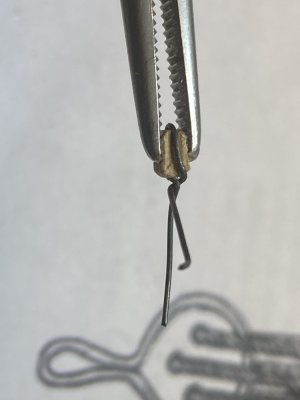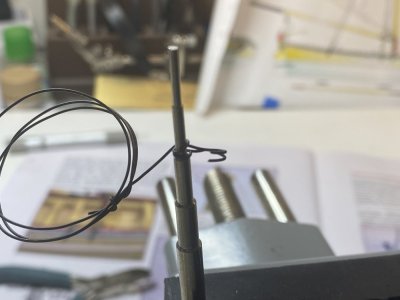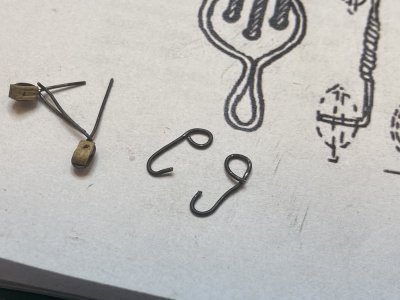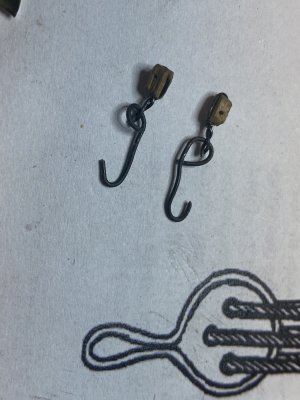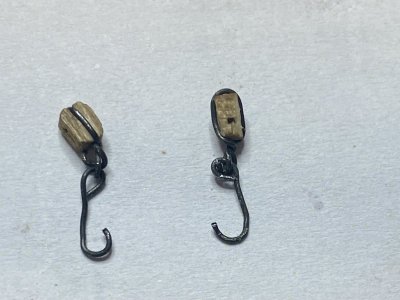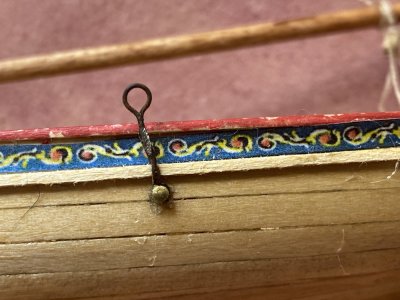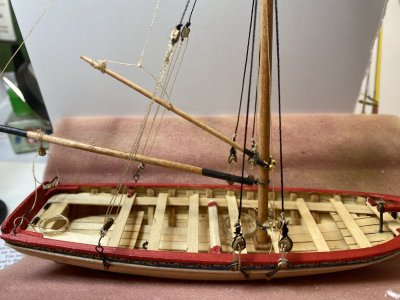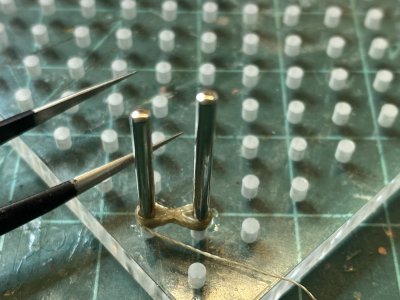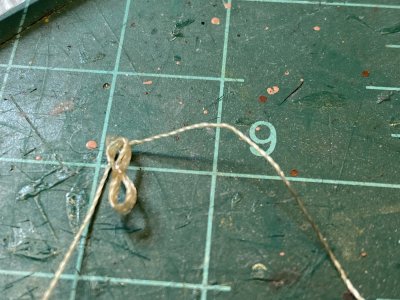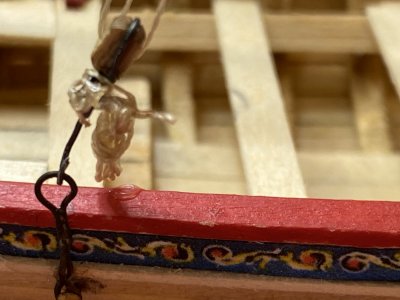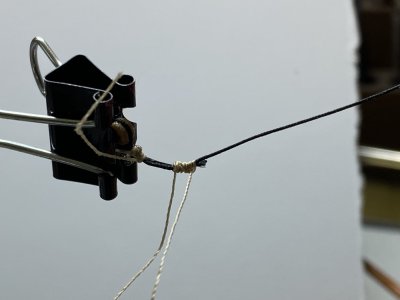-

Win a Free Custom Engraved Brass Coin!!!
As a way to introduce our brass coins to the community, we will raffle off a free coin during the month of August. Follow link ABOVE for instructions for entering.
-

PRE-ORDER SHIPS IN SCALE TODAY!
The beloved Ships in Scale Magazine is back and charting a new course for 2026!
Discover new skills, new techniques, and new inspirations in every issue.
NOTE THAT OUR FIRST ISSUE WILL BE JAN/FEB 2026
You are using an out of date browser. It may not display this or other websites correctly.
You should upgrade or use an alternative browser.
You should upgrade or use an alternative browser.
Good morning Rob. I just learnt something new- I never heard of a deadeye claw- now I know. It all these details which make for a fine model- nice. Cheers GrantThe deadeye claw was used to set the distance to the other deadeye on the shroud.
View attachment 466522
The shroud was wrapped around the other deadeye, held in place by a dab of UV glue.
View attachment 466523
Thank you Grant, This deadeye claw is a good way (at least for me) to set the distances to be equal between shroud lines. I will know for sure when I, hopefully, am able to tie the lower and upper deadeyes together.Good morning Rob. I just learnt something new- I never heard of a deadeye claw- now I know. It all these details which make for a fine model- nice. Cheers Grant
Well the first time I have laced deadeyes together. I have done 4 so far, these are the first 2. I think by the time I get to 100 of them I will have it down!
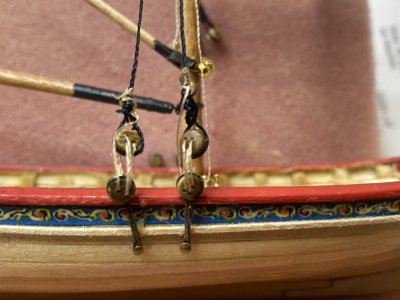
For some reason, even using the deadeye claw to keep the distance the same, the lenghts of th lashings on one side are longer than the other side. At least the shrouds appear to be under tension and straight.
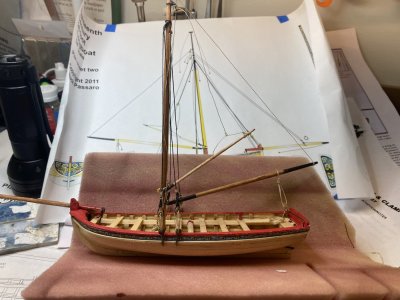

For some reason, even using the deadeye claw to keep the distance the same, the lenghts of th lashings on one side are longer than the other side. At least the shrouds appear to be under tension and straight.

Last edited:
Next up was making chain plates for the backstays. Measuring off the plans I set up the jewelry wire jig so the pegs were 10mm apart. I again used the supplied 28 gauge wire which was wrapped around the pegs.
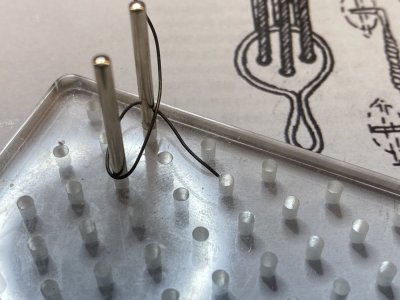
I then used needle nose pliers to crimp them into a tight fit around the pegs and cut the wire to length using side cutters.
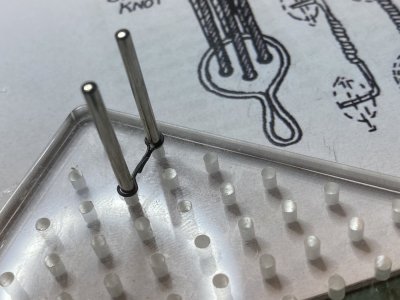

I then used needle nose pliers to crimp them into a tight fit around the pegs and cut the wire to length using side cutters.

- Joined
- Jun 29, 2024
- Messages
- 1,433
- Points
- 393

I’m a new member of SOS so missed Alan’s comments about the mainsheet horse aka traveler. The forces affecting a sailboat are the same today as they were in the 1700’s so the physics of sailing a boat today are the same.
These boats were equipped with a large powerful mainsail. With the tiller swinging over the traveler it would have fouled the mainsheet every time the boat tacked. In anything other than a near dead calm moving the mainsheet around the foreword end of the tiller while tacking would have been impossible.
I have sailed on dozens of different sail boats from a Sunfish to a 40’ Screamer. When a boat tacks it is vulnerable because without forward motion the force vectors are broadside and “over she goes!.” I have the capsizes to prove this.
I cannot explain decisively why the traveler on the Medford model is arranged as it is but I suspect that sometime during its long life, the model was rerigged by someone who was not a sailor.
Roger
These boats were equipped with a large powerful mainsail. With the tiller swinging over the traveler it would have fouled the mainsheet every time the boat tacked. In anything other than a near dead calm moving the mainsheet around the foreword end of the tiller while tacking would have been impossible.
I have sailed on dozens of different sail boats from a Sunfish to a 40’ Screamer. When a boat tacks it is vulnerable because without forward motion the force vectors are broadside and “over she goes!.” I have the capsizes to prove this.
I cannot explain decisively why the traveler on the Medford model is arranged as it is but I suspect that sometime during its long life, the model was rerigged by someone who was not a sailor.
Roger
Last edited:
Good morning Rob. You attention to detail on this boat is commendable and certainly has added to this model. Those hooks. I would try make them smaller if you can.The hooks were then passed through the excess wire, the wire twisted and the excess trimmed away.
View attachment 468036
Love the last pic-Well the first time I have laced deadeyes together. I have done 4 so far, these are the first 2. I think by the time I get to 100 of them I will have it down!
View attachment 467885
For some reason, even using the deadeye claw to keep the distance the same, the lenghts of th lashings on one side are longer than the other side. At least the shrouds appear to be under tension and straight.
View attachment 467886
Cheers Grant
Roger I agree entirely with what you say. This is actually mentioned in the instructions.I’m a new member of SOS so missed Alan’s comments about the mainsheet horse aka traveler. The forces affecting a sailboat are the same today as they were in the 1700’s so the physics of sailing a boat today are the same.
These boats were equipped with a large powerful mainsail. With the tiller swinging over the traveler it would have fouled the mainsheet every time the boat tacked. In anything other than a near dead calm moving the mainsheet around the foreword end of the tiller while tacking would have been impossible.
I have sailed on dozens of different sail boats from a Sunfish to a 40’ Screamer. When a boat tacks it is vulnerable because without forward motion the force vectors are broadside and “over she goes!.” I have the capsizes to prove this.
I cannot explain decisively why the traveler on the Medford model is arranged as it is but I suspect that sometime during its long life, the model was rerigged by someone who was not a sailor.
Roger
"Up to the mid-18thcentury, the horse was positioned as shown on the model.This presented a problem while sailing, as the tiller would get in the way. It wouldn’t allow the block to slide effortlessly from one side to the other.
To remedy this, during the second half of the 18th century,they started making the horse so it actually spanned over the tiller. You may opt to do so as well.
But since this model is inspired by several contemporary longboat models in the NMM, it was created as shown on those models. These contemporary models represent the horse prior to the improvement being made."
You are right Grant, I was not happy with the hooks I will try to make them smaller.Good morning Rob. You attention to detail on this boat is commendable and certainly has added to this model. Those hooks. I would try make them smaller if you can.
Love the last pic-
Cheers Grant
The backstay has two single blocks seized to each end. There is running rigging with that attaches to the blocks with the hooks, which are in turn hooked to the chain plates.
I decided to seize the backstay lines (the black thread) and the running rigging (tan thread) to the single block by using wire twised around the single block and the lines.
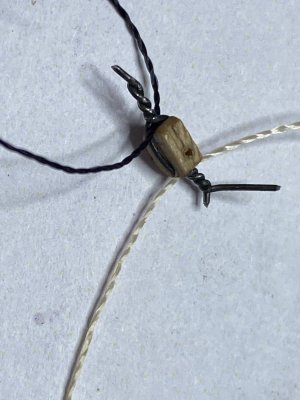
I then cut the excess wire away,
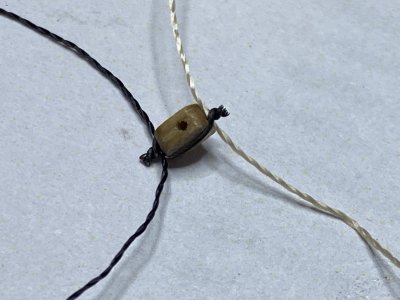
I then seized the end of the black kine to the single block.
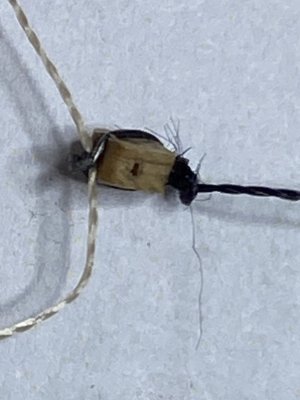
I will do the same thing to the tan line.
I decided to seize the backstay lines (the black thread) and the running rigging (tan thread) to the single block by using wire twised around the single block and the lines.

I then cut the excess wire away,

I then seized the end of the black kine to the single block.

I will do the same thing to the tan line.
The back stays were then seized to the mast and help in place with glue. The line from the blocks of the chainplates were then laced through the blocks with the hooks. They were hooked to the chainplates and put under tension.
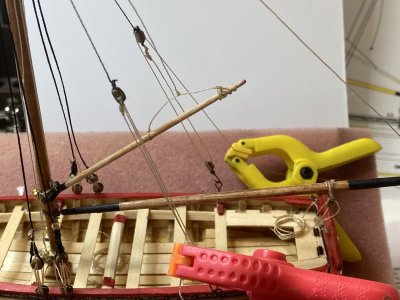
The lines were then held in place with a dab of glue in the backstay blocks


The lines were then held in place with a dab of glue in the backstay blocks


